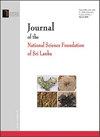通过遥感对斯里兰卡土地利用和土地覆被变化进行多尺度分析:过去 20 年(2002-2022 年)战后基础设施发展的影响
IF 0.4
4区 综合性期刊
Q4 MULTIDISCIPLINARY SCIENCES
Journal of the National Science Foundation of Sri Lanka
Pub Date : 2024-01-02
DOI:10.4038/jnsfsr.v51i4.11548
引用次数: 0
摘要
在全球范围内,土地利用和土地覆被变化(LULCC)是全球变化和生物多样性侵蚀的主要驱动因素。本研究旨在监测斯里兰卡的土地利用和土地覆被变化及植被动态,以确定主要变化及其驱动因素。它强调利用卫星数据进行多尺度地理空间监测,同时也调动了研究计划的跨学科知识。首先,利用全国范围的数据,可以利用 MODIS NDVI 数据集,通过 Mann-Kendall 检验和时间曲线分析,确定主要变化。第二步,通过对谷歌地球上的高分辨率图像进行系统的非同步视觉解读,确定地方尺度。第三步是以南海岸和东海岸为重点的宏观区域尺度,使用经实地研究(植物和植被分析以及访谈)验证的 LANDSAT 图像(堆叠 K-means)。斯里兰卡全岛约 92.5%的植被保持稳定或无明显变化趋势。5%的地区在 2000 年至 2020 年间呈现出明显的正增长(绿化)趋势,这些地区位于普特拉姆泻湖周围、萨马纳拉瓦瓦水库以西、乌达瓦拉维国家公园、埃拉以东和以北以及努瓦拉加拉森林保护区。只有约 2.5%(165,000 公顷)的岛屿呈显著负增长趋势,主要集中在科伦坡和亭可马里周边地区。第一个驱动因素是基础设施发展方面的一系列国家规划决策(包括城市发展、住房计划和农田以及保护区管理)。第二个驱动力来自农村动态,乌瓦省农村地区的树木密度不断增加。由国家发起的基础设施建设既为其他活动创造了基础条件,也对沿海生态系统造成了负面影响,如湿地(包括保护区)退化。本文章由计算机程序翻译,如有差异,请以英文原文为准。
Multiscale analysis of land use and land cover changes in Sri Lanka by remote sensing: the impacts of post-war infrastructure development in the last 20 Years (2002-2022)
On a worldwide scale, land use and land cover changes (LULCC) is a major driver of global change and biodiversity erosion. This study aims to monitor at the scale of Sri Lanka, LULCC and vegetation dynamics, to identify the main changes and their drivers. It places emphasis on multiscale geospatial monitoring with satellite data but also mobilises the interdisciplinary knowledge of a research programme. First, national scale data allows the identification of major changes with the MODIS NDVI dataset using Mann-Kendall tests and time profile analysis. A second local scale was mobilised with a systematic diachronic visual interpretation of high-resolution images on Google Earth. The third step, a macro-regional scale focus on the South and East coasts, used LANDSAT imagery (Stacked K-means) verified by field studies (botanical and vegetation analysis, and interviews). About 92.5% of the island of Sri Lanka is stable or presents no significant trends in the vegetation cover. 5% show a significant positive (greening) trend between 2000 and 2020 around the Puttalam lagoon, west of the Samanalawewa Reservoir, in the Udawalawe National Park, east and north of Ella, and the Nuwaragala Forest Reserve. Only about 2.5% (165,000 ha) of the Island shows a negative significant trend mainly in the periphery of Colombo and Trincomalee. The first driver is a set of national planning decisions in terms of infrastructure development (including urban growth, housing programmes and agricultural fields, and the management of protected areas). The second driver comes under rural dynamics with increasing tree density in rural landscapes over the Uva Province. Infrastructure development initiated by the state, creates both underlying conditions for other activities and negative impacts on coastal ecosystems, such as degradation of wetlands (including protected areas).
求助全文
通过发布文献求助,成功后即可免费获取论文全文。
去求助
来源期刊

Journal of the National Science Foundation of Sri Lanka
MULTIDISCIPLINARY SCIENCES-
CiteScore
0.90
自引率
0.00%
发文量
57
审稿时长
>12 weeks
期刊介绍:
The Journal of National Science Foundation of Sri Lanka (JNSF) publishes the results of research in Science and Technology. The journal is released four times a year, in March, June, September and December. This journal contains Research Articles, Reviews, Research Communications and Correspondences.
Manuscripts submitted to the journal are accepted on the understanding that they will be reviewed prior to acceptance and that they have not been submitted for publication elsewhere.
 求助内容:
求助内容: 应助结果提醒方式:
应助结果提醒方式:


